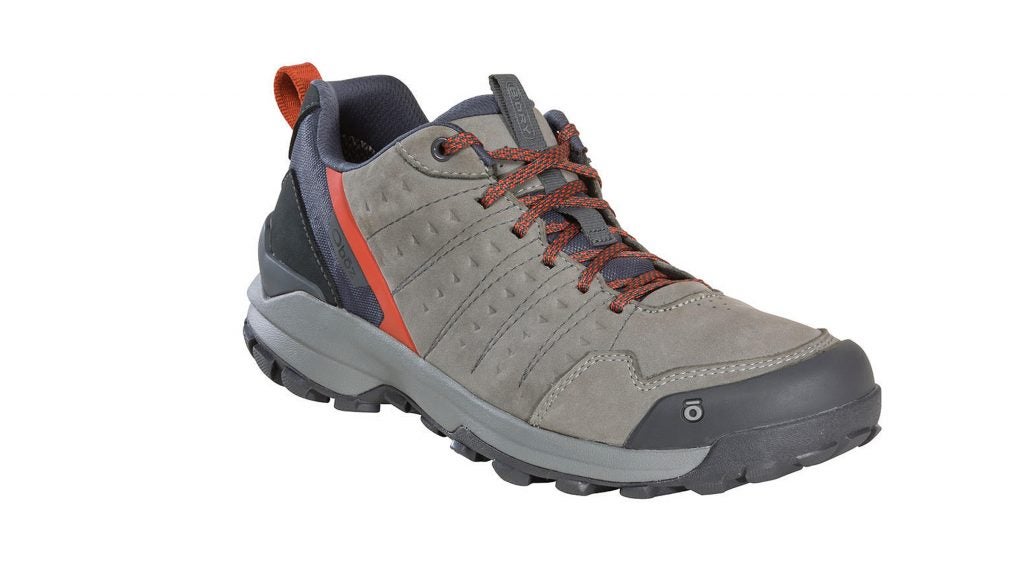Products You May Like
Receive $50 off an eligible $100 purchase at the Outside Shop, where you’ll find gear for all your adventures outdoors.
Sign up for Outside+ today.
Hiking shoes are much more than just pared-down hiking boots for desert dwellers and trail runners. They’re lightweight, usually very breathable, and offer another option to hikers who don’t want heavier, over-the-ankle boots. You can find a wealth of backpacking shoes on the market to fit almost any form or function preference. Here are the best backpacking shoes on the market right now.
What to Look For in a Hiking Shoe
There are two broad categories of hiking shoes: sturdy, boot-like low-tops able to handle difficult terrain and provide support without strangling your ankles, and lighter, flexible trail shoes that prioritize nimbleness and breathability.
A heavier backpacking shoe is best for rougher terrain and long-distance, gear-heavy trips that require underfoot support. These shoes share many traits with traditional backpacking boots, including beefy midsoles and rock plates, two protective elements that keep your feet safe and increase stability and durability. You might also find a higher stack height—the height of the midsole—and a more aggressive tread on boot-like shoes that add cushioning and grip for hikers facing rocky, root-covered trails. While you might not be as nimble on the trail with this type of shoe, a boot-like backpacking shoe’s durability, foot protection, and support are major draws.
On the other end of the spectrum, lighter shoes are designed to keep agility, comfort, and breathability high. These can have a wide range of stack heights depending on your strike and cushion preference, and come with and without rock plates, so consider your comfort preference and the kind of terrain you usually hike. You might miss out on some protection and stability, but your stride will be lighter and more natural.
Once you find the right midsole, stack height, tread size and weight, look for region or trail-specific add-ons like weatherproofing, breathable fabrics, fit, and aesthetic to narrow your choice.
Should You Buy a Hiking Shoe or a Hiking Boot?
Traditional hiking boots will generally offer more support, durability, and stability than a hiking shoe. However, they’re often heavier, more expensive, less breathable, and less nimble than their pared-down cousins. All of these factors have caveats, of course, from upper material to intended use; there are plenty of relatively airy, nimble true hiking boots.
On the flip side, hiking shoes offer more agility, weigh less on your feet, breathe better and are usually cheaper than traditional boots. They may sacrifice some longevity if you wear them often and may feel less secure under a heavy pack. As with boots, there are many exceptions, and plenty of hiking shoes are burly and designed for load-heavy backpacking trips.
Best Hiking Shoes on the Market

Best for Warm-Weather Hikes: Danner Trail 2650 Campo
- Price: $160
- Weight: 1 lb. 6 oz.
- Buy Now
Hot, dry conditions call for a special type of hiking shoe. Designed with the southern section of the Pacific Crest Trail in mind, the Trail 2650 Campo kept our feet from overheating on hikes in the Tetons and climbing approaches in Idaho’s arid City of Rocks, largely thanks to a lightweight perforated upper. We suffered no blisters even when temps climbed as high as 90°F, and the Campo dried quickly after stream crossings thanks to water-draining ports in the midsole (no waterproof membrane on this shoe). On the way down Disappointment Peak in the Tetons, the Vibram Megagrip outsole held on tight and let us move quickly through the rocky terrain. A lightweight, ¾-length TPU shank and rock plate position the Campo squarely between trail runners and hiking boots, with enough stiffness for long days with an overnight pack while still staying nimble for scrambles. —Ryan Wichelns
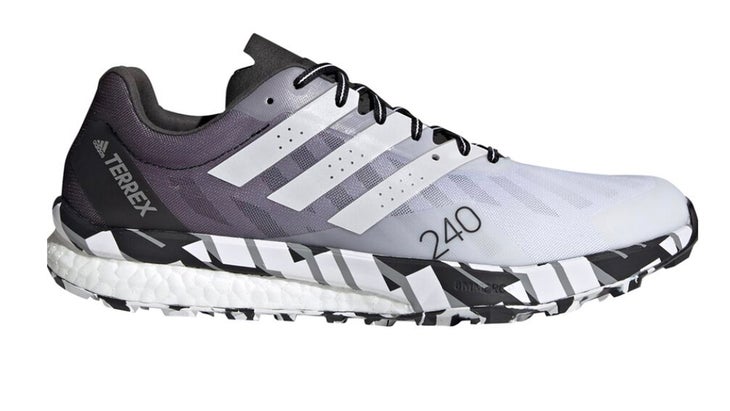
Lightest: adidas Terrex Speed Ultra
- Price: $160
- Weight: 8.6 oz.
- Buy Now
The Terrex Speed Ultra’s smooth ride is the result of using two materials in the midsole: a molded EVA layer on top and a layer of encapsulated PU on the bottom. The EVA provides cushion, the PU ensures a springy step and resists compression, and both of them together are ideal for moving fast and nimbly, and covering long distances through off-camber terrain. The mesh upper has proved plenty breathable on days in the high 80s, and seems to be durable so far. The Continental outsole grants dependable traction on dirt singletrack and medium-sized rocks, although I think the shallow, uniform V-shape lugs would lose a little grip in mud or on rock slabs. As long as I’m not running on those, though, the Terrex Speed Ultra will be one of my go-to footwear choices. —Eli Bernstein
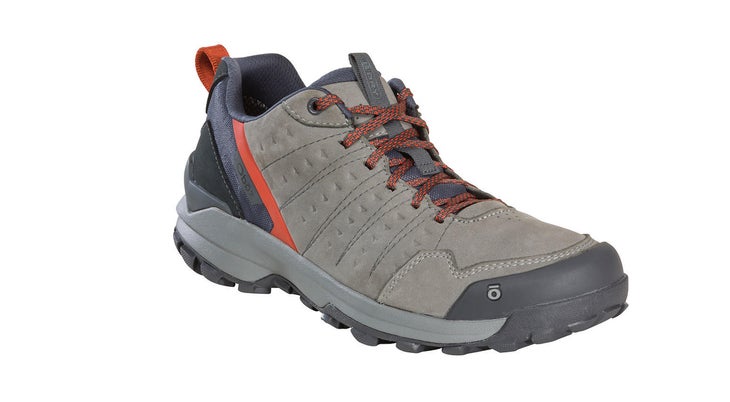
Best for Carrying Heavy Loads: Oboz Sypes
- Price: $145
- Weight: 1 lb. 15 oz.
- Buy Now
If we were only allowed to own one pair of hiking shoes, the Sypes Low would be our pick. We took it on both long trips and day hikes, through the airport and up peaks, and it never let us down. This shoe’s low profile and roomy fit make it comfortable for daily activities (plus, it doesn’t look too “hiker-y” for off-trail use). When neighborhood jaunts proved no match, we took a chance wearing the Sypes Low on the 7-mile, 4,300-foot climb up Mt. Shuksan’s Fisher Chimneys. On the route, the shoe’s PU midsole (which has a midfoot nylon shank) provided stability and kept us comfy under a 40-pound pack, and the chunky proprietary outsole with 5-millimeter-deep lugs ensured our steps never faltered on a heinous bushwhack. —R.W.
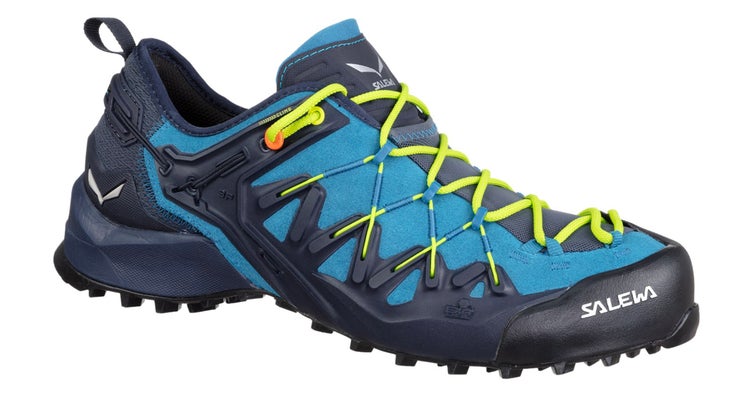
Best for Rough Terrain: Salewa Wildfire Edge
- Price: $169
- Weight: 1 lb. 14 oz.
- Buy Now
On steep and rocky trails, you want a shoe to match. One guide-in-training swears by the Wildfire Edge, an approach shoe that toggles between hike and scramble modes via a neat trick: Simply cinch the laces that extend around the heel, which forces your foot to the front for increased groundfeel and precision. “It gave me the confidence I needed to navigate twisty approach hikes in France’s Gorges du Verdon with 30 pounds of gear on my back,” our tester says. She also reports that the Wildfire Edge has survived months of scrapes with sharp limestone; credit the thick suede upper wrapped in a TPU exoskeleton, as well as higher-than-normal TPU rands on the heel and toe. Caveat: Our tester found the thick suede upper results in subpar breathability. — E.B.
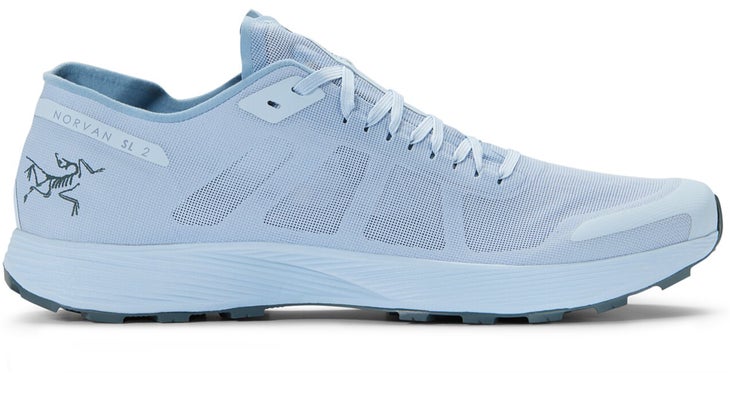
Best for Speed Freaks: Arc’teryx Norvan SL 2
- Price: $160
- Weight: 12 oz.
- Buy Now
We’ve found minimalist bliss: Wearing the 12-ounce Norvan SL 2 is almost like going barefoot, if your foot had a sticky, tough outsole. With a mesh upper that one tester says felt like he was wearing sandals, an integrated mesh insole, and a 12-millimeter stack height (with a 7-millimeter drop), this shoe is as pared down as anything else we tested this year. The fit does take some getting used to: One tester said he could feel the trail under his feet more than in other trail runners (there’s no rock plate), and the low arch support may not work for everyone. (We weren’t keen on carrying more than a daypack while wearing the Norvan SL 2.) But we found the Vibram Megagrip outsole secure in everything from sand and mud to wet leaves while running around Christmas Rocks State Nature Preserve in Ohio, and the light weight kept our feet nimble. A TPU film around the exterior makes the shoe surprisingly durable considering its weight, and the EVA midsole held up to pounding without compressing after a full summer of use. —R.W.
What a Backpacker Editor Looks For in a Hiking Shoe
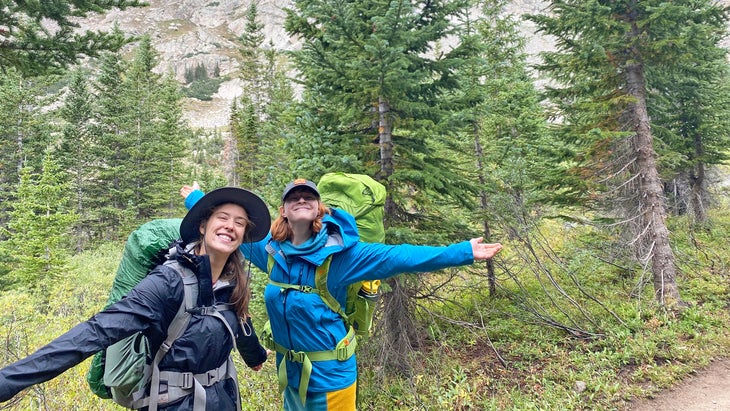
Zoe Gates, Senior Skills Editor
“My backpacking shoes usually double as trail runners and dayhikers, so I look for a shoe that can do it all: Deep lugs for muddy trails and supportive soles for under a pack, but light enough to keep me nimble when I hit the trail with only a running vest. I prefer a breathable upper that will drain and dry fast after wading through streams. I’m not the most sure-footed, so grippy rubber outsoles help me feel more confident on descents. (For more technical hiking and scrambling, I opt for a stiff approach shoe with sticky rubber and no lugs for extra contact with the rock.) Gusseted tongues to keep out grit and pebbles are a bonus.”
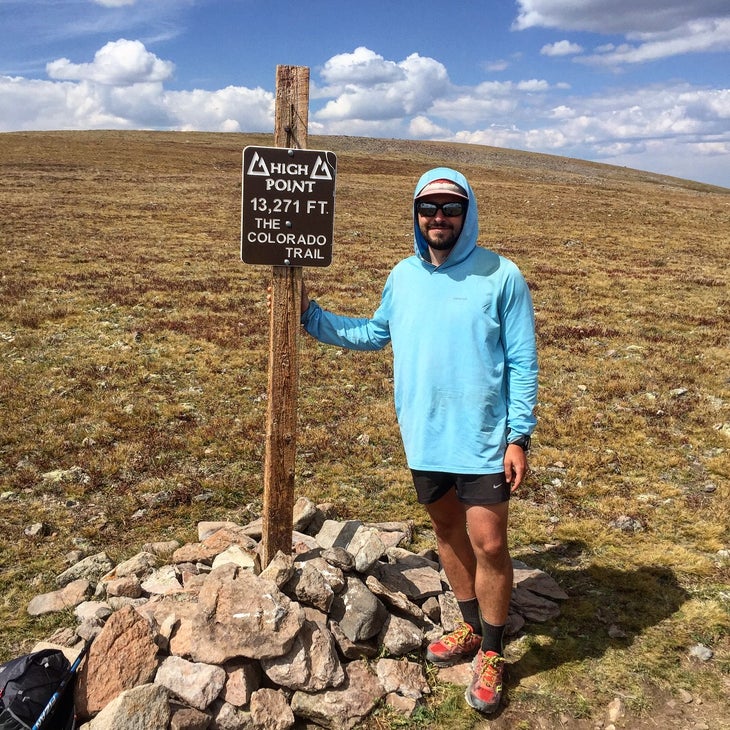
Ben Tepler, Assistant Gear Editor
“Because I come from a trail running background, I’m more drawn to lightweight hiking shoes than the heavier, low-cut hiking boot-type alternative. That said, I still look for a substantial midsole and shank to offer support while carrying bigger loads. Most important—for me—is a non-waterproof membrane: I’d rather dry out quickly than tip-toe around deeper water.”
How to Maintain Your Hiking Shoes
While it might earn you some cred to show off your dirty, worn-down hiking shoes, the key to a trail shoe’s long life is consistent cleaning and maintenance. Hit it with a stiff-bristled brush and take out the insoles after every hike as regular maintenance. Once or twice a year give them a deep clean with soap and water or a material-specific treatment.
If your shoes are more than cosmetically damaged, keeping a spare shoelace or repair kit for a missing eyelet handy should take care of small problems; anything more, and you’ll likely want to send them back to the manufacturer for repair, or take them to a cobbler.
